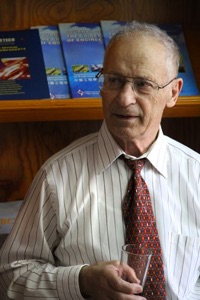Prof. Tovmassian's main research fields are radiogalaxies, radio properties of Markarian galaxies, space astronomy, groups of galaxies, flare stars. His main scientific results may be given as:
· 1960-1965. Together with Byurakan astronomers A.T.Kalloglian, K.A.Sahakian and S.G.Ikudarian participated in photographic classification of central regions of spiral galaxies. It has been found that some galaxies posses the so called starlike nucleus with possible activity. Afterwards by radio observations of several hundred galaxies with the Parks 64 m ratio telescope and the 1 mile Mills cross (Australia) it was shown that about 25% of galaxies with starlike nuclei have non-thermal radio emission and, thus, are in active stage. The percentage of radio emitting galaxies was higher (~80%) among galaxies with abnormal spectra and color.

· 1972-1978. Radio observations of more than 1000 Markarian galaxies with the 100 m radio telescopes at Green Bank (NRAO, USA) and Effelsberg (Germany) (together with R.A.Sramek, W.A.Sherwood et al.). It was shown that mostly galaxies of Seyfert and BL Lac types are radio emitting are . The difference of radio properties of Sy1 and Sy2 galaxies was revealed.
· 1965-1972. Radio observations of e few hundred clusters of galaxies with 64 m radio telescope in Parkes (Australia) and 100 m radio telescope in Green Bank (USA). It was shown that radio sources occur mainly in clusters of Bauts-Morgan type I. Radio sources were tentatively identified with individual galaxies.

· 1970s-2000s. Discovery of super-short (spiky) flares of flare stars of duration of a few tenths of a second by observations with specially constructed two-color photometer (with V.P.Zalinian). A unified phenomenological model of light curves of stellar flares is suggested (with V.P Zalinian in collaboration with astronomers from Mexico) that explains a variety of flare curves by the position of the flare on the surface of the star.
· 1980s. Study of the IR radiation of a few stars with anomalous composition (excessive abundance of C, Zr, La, etc.) discovery of IR excess for many of them (with Yu.K.Melik-Alaverdian, et al.).
· 1980s. Proposal and construction of the offset guiding system for the Soviet space observatory Astron (with M.N.Krmoyan, Yu.M.Khodjayants et al). Study of UV spectra of galaxies with Astron; significant increase of radiation at far UV was detected for some galaxies (in collaboration with A.A.Boyarchuk et al.).


